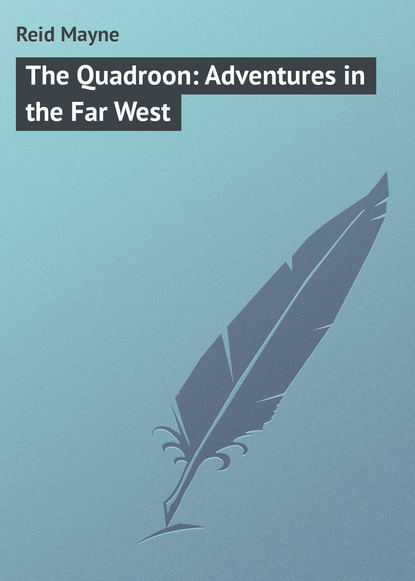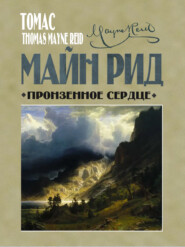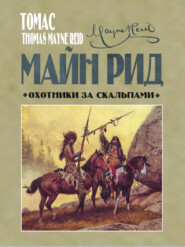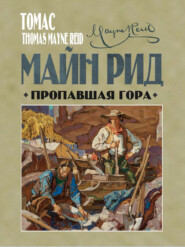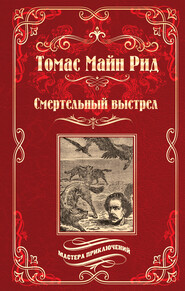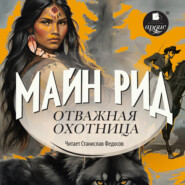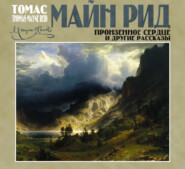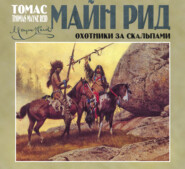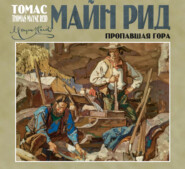По всем вопросам обращайтесь на: info@litportal.ru
(©) 2003-2024.
✖
The Quadroon: Adventures in the Far West
Автор
Год написания книги
2017
Настройки чтения
Размер шрифта
Высота строк
Поля
“This Gabriel – this snake-charmer, is the very man. How fortunate I should have met with him!”
After a moment’s hesitation – during the time these reflections were passing through my mind – I called out to the black —
“Lead on! I follow you!”
Whither did he intend to guide me? What was he going to do? Where was he to find an antidote? How was he to cure me?
To these questions, hurriedly put, I received no reply.
“You truss me, mass’ Edward; you foller me!” were all the words the black would utter as he strode off among the trees.
I had no choice but to follow him.
After proceeding several hundred yards through the cypress swamp, I saw some spots of sky in front of us. This indicated an opening in the woods, and for that I saw my guide was heading. I was not surprised on reaching this opening to find that it was the glade – again the fatal glade!
To my eyes how changed its aspect! I could not bear the bright sun that gleamed into it. The sheen of its flowers wearied my sight – their perfume made me sick!
Maybe I only fancied this. I was sick, but from a very different cause. The poison was mingling with my blood. It was setting my veins on fire. I was tortured by a choking sensation of thirst, and already felt that spasmodic compression of the chest, and difficulty of breathing – the well-known symptoms experienced by the victims of snake-poison.
It may be that I only fancied most of this. I knew that a venomous serpent had bitten me; and that knowledge may have excited my imagination to an extreme susceptibility. Whether the symptoms did in reality exist, I suffered them all the same. My fancy had all the painfulness of reality!
My companion directed me to be seated. Moving about, he said, was not good. He desired me to be calm and patient, once more begging me to “truss Gabr’l.”
I resolved to be quiet, though patient I could not be. My peril was too great.
Physically I obeyed him. I sat down upon a log – that same log of the liriodendron – and under the shade of a spreading dogwood-tree. With all the patience I could command, I sat awaiting the orders of the snake-doctor. He had gone off a little way, and was now wandering around the glade with eyes bent upon the ground. He appeared to be searching for something.
“Some plant,” thought I, “he expects to find growing there.”
I watched his movements with more than ordinary interest. I need hardly have said this. It would have been sufficient to say that I felt my life depended on the result of his search. His success or his failure were life or death to me.
How my heart leaped when I saw him bend forward, and then stoop still lower, as if clutching something upon the ground! An exclamation of joy that escaped his lips was echoed in a louder key from my own; and, forgetting his directions to remain quiet, I sprang up from the log, and ran towards him.
As I approached he was upon his knees, and with his knife-blade was digging around a plant, as if to raise it by the roots. It was a small herbaceous plant, with erect simple stem, oblong lanceolate leaves, and a terminal spike of not very conspicuous white flowers. Though I knew it not then, it was the famed “snake-root” (Polygala senega).
In a few moments he had removed the earth, and then, drawing out the plant, shook its roots free of the mould. I noticed that a mass of woody contorted rhizomes, somewhat thicker than those of the sarsaparilla briar, adhered to the stem. They were covered with ash-coloured bark, and quite inodorous. Amid the fibres of these roots lay the antidote to the snake-poison – in their sap was the saviour of my rife!
Not a moment was lost in preparing them. There were no hieroglyphics nor Latinic phraseology employed in the prescription of the snake-charmer. It was comprised in the phrase, “Chaw it!” and, along with this simple direction, a piece of the root scraped clear of the bark was put into my hand. I did as I was desired, and in a moment I had reduced the root to a pulp, and was swallowing its sanitary juices.
The taste was at first rather sweetish, and engendered a slight feeling of nausea; but, as I continued to chew, it became hot and pungent, producing a peculiar tingling sensation in the fauces and throat.
The black now ran to the nearest brook, filled one of his “brogans” with water, and, returning, washed my wrist until the tobacco juice was all removed from the wound. Having himself chewed a number of the leaves of the plant into a pulpy mass, he placed it directly upon the bitten part, and then bound up the wound as before.
Everything was now done that could be done. I was instructed to abide the result patiently and without fear.
In a very short time a profuse perspiration broke out over my whole body, and I began to expectorate freely. I felt, moreover, a strong inclination to vomit – which I should have done had I swallowed any more of the juice, for, taken in large doses, the seneca root is a powerful emetic.
But of the feelings I experienced at that moment, the most agreeable was the belief that I was cured!
Strange to say, this belief almost at once impressed my mind with the force of a conviction. I no longer doubted the skill of the snake-doctor.
Chapter Thirty Six
Charming the Crotalus
I was destined to witness still further proofs of the wonderful capabilities of my new acquaintance.
I felt the natural joy of one whose life has been, saved from destruction – singularly, almost miraculously saved. Like one who has escaped from drowning, from the field of slaughter, from the very jaws of death. The reaction was delightful. I felt gratitude, too, for him who had saved me. I could have embraced my sable companion, black and fierce as he was, like a brother.
We sat side by side upon the log, and chatted gaily; – gaily as men may whose future is dark and unsettled. Alas! it was so with both of us. Mine had been dark for days past; and his – what was his, poor helot?
But even in the gloom of sadness the mind has its moments of joy. Nature has not allowed that grief may be continuous, and at intervals the spirit must soar above its sorrows. Such an interval was upon me then. Joy and gratitude were in my heart. I had grown fond of this slave, – this runaway slave, – and was for the moment happy in his companionship.
It was natural our conversation should be of snakes and snake-roots, and many a strange fact he imparted to me relating to reptile life. A herpetologist might have envied me the hour I spent upon that log in the company of Gabriel the Bambarra.
In the midst of our conversation my companion abruptly asked the question, whether I had killed the snake that had bitten me.
“No,” I replied. “It escaped.”
“’Scaped, mass’! whar did um go?”
“It took shelter in a hollow log, – the very one on which we are seated.”
The eyes of the negro sparkled with delight.
“Dam!” exclaimed he, starting to his feet; “mass’ say snake in dis yeer log? Dam!” he repeated, “if do varmint yeer in dis log, Gabr’l soon fetch ’im out.”
“What! you have no axe?”
“Dis nigga axe no want for dat.”
“How, then, can you get at the snake? Do you intend to set fire to the log?”
“Ho! fire no good. Dat log burn whole month. Fire no good: smoke white men see, – b’lieve ’im runaway, – den come de blood-dogs. Dis nigga daren’t make no fire.”
“How, then?”
“Wait a bit, mass’ Edwad, you see. Dis nigga fetch de rattlesnake right out ob ’im boots. Please, young mass’, keep still; don’t speak ’bove de breff: ole varmint, he hear ebbery word.”
The black now talked in whispers, as he glided stealthily around the log. I followed his directions, and remained perfectly “still,” watching every movement of my singular companion.
Some young reeds of the American bamboo (Arundo gigantea) were growing near. A number of these he cut down with his knife; and then, sharpening their lower ends, stuck them into the ground, near the end of the log. He arranged the reeds in such a manner that they stood side by side, like the strings of a harp, only closer together. He next chose a small sapling from the thicket, and trimmed it so that nothing remained but a straight wand with a forked end. With this in one hand, and a piece of split cane in the other, he placed himself flat along the log, in such a position that his face was directly over the entrance to the cavity. He was also close to the row of canes, so that with his outstretched hand he could conveniently reach them. His arrangements were now completed, and the “charm” commenced.
Laying aside the forked sapling ready to his hand, he took the piece of split reed, and drew it backward and forward across the row of upright canes. This produced a sound which was an exact imitation of the “skerr” of the rattlesnake; go like, that a person hearing it, without knowing what caused it, would undoubtedly have mistaken it for the latter; so like, that the black knew the reptile itself would be deceived by it! He did not, however, trust to this alone to allure his victim. Aided by an instrument which he had hastily constructed out of the lanceolate leaves of the cane, he at the same time imitated the scream and chatter of the red cardinal (Loxia cardinalis), just as when that bird is engaged in battle, either with a serpent, an opossum, or some other of its habitual enemies.
The sounds produced were exactly similar to those often heard in the depths of the American forest, when the dread crotalus plunders the nest of the Virginian nightingale.
The stratagem proved successful. In a few moments the lozenge-shaped head of the reptile appeared outside the cavity. Its forking tongue was protruded at short intervals, and its small dark eyes glittered with rage. Its rattle could be heard, announcing its determination to take part in the fray – which it supposed was going on outside.





